Sidechains - Crypto Academy / S4W8 - Homework post for pelon53
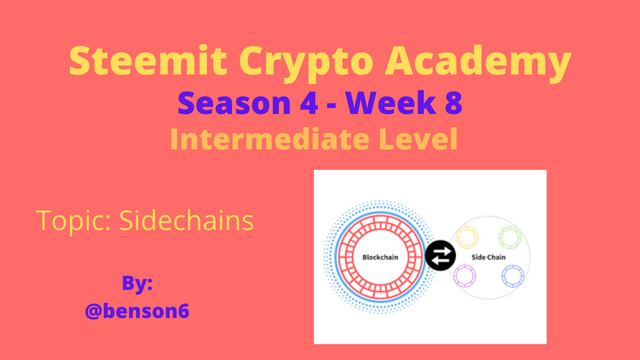

1.- Explain in detail the Sidechains with the use of ZK-Rollups.

ZK rollups also known as Zero-Knowledge rollups put together a group of transfers that are off-chain and generate a type of proof that is cryptographic called SNARK or succinct non-interactive argument of knowledge. SNARK is the validity proof being employed by blockchains (sidechains) using ZK rollups and is posted on layer 1 (on-chain).
ZK rollups are used by layer 2 blockchains. The smart contract in ZK rollups maintains the status of all transactions on the blockchain and updates can only be done by validity proof. That is, in ZK rollups, only validity proof is needed when validating a block, not all the data for the transaction is needed. This makes it that validating a block is quicker and at the same time cheaper because the data involved is less.
There is no time wastage in the transfer of funds from layer 2 to layer 1 because validity proof has already done the process of verification. There are different blockchain technologies or sidechains that make use of ZK-rollups. They include:
- Loopring
- Hermez
- ZKTube
- Aztec
- StarkWare
- ZKSync
I shall be discussing 3 of the sidechains (blockchains) that have been mentioned in the list above.
Hermez HEZ
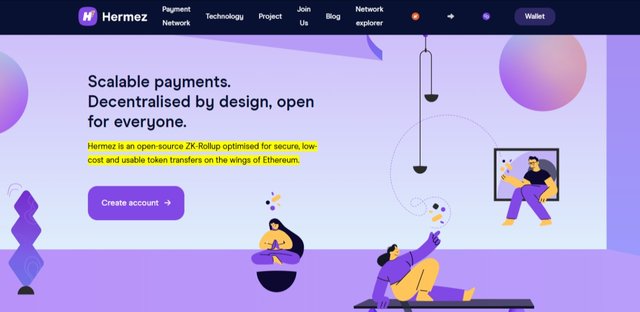
Hermez ZK rollup is a payment network that is permissionless and is designed to take in a high volume of transactions at very reduced costs. They aim to help Ethereum's blockchain network especially when the network experiences peak periods of transactions. The barrier to entry in decentralized finance is very high, so they intend to lower it.
It uses a mechanism called Proof-of-Donation. This is a situation where block generators get selected through a burn auction, but rather than burn the tokens, 40% of the bid that won is returned as a donation to be reinvested in Ethereum's public goods through the quadratic funding grants created by Gitcoin.
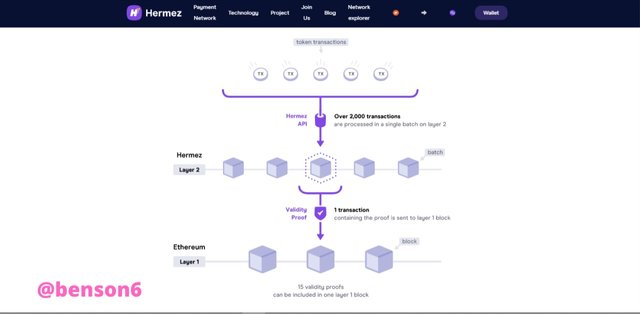
It is made use of permissionless auctions for validators where anyone can propose a bid in a decentralized auction to create the next batch of transactions on the network. The successful validator gets rewarded with the transaction fees that have been generated.
It has its native token HEZ which is used in the bidding process for a prospective validator to be awarded slots in the network.
It entails the use of ZK rollups which is a layer 2 construction on top of Ethereum to resolve scalability through rapid transfer processing rolled into a single transaction. The ZK rollup technology is used to make the transactions valid and recorded as they are rolled into Ethereum's blockchain. This is achieved by storing just the proof and specific data of a group of transfers that are placed in a batch, thus increasing the efficiency and the throughput of Ethereum's network
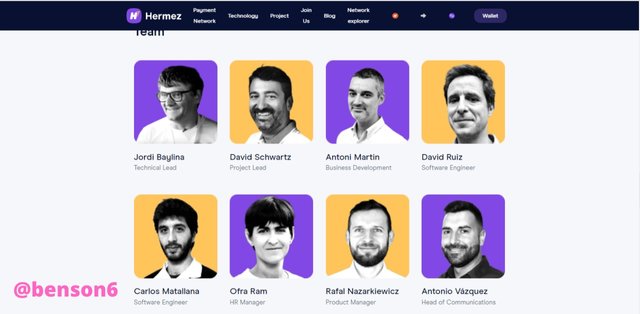
Hermez Network was launched on Ethereum's main-net on the 24th of March 2021. The team behind Hermez is a group of individuals that numbers up to 28, with each having their area of specialization. Some of them are Jordi Baylina (Technical Lead), David Schwartz (Project Lead), Antoni Martin (Business Development), David Ruiz (Software Engineer), Carlos Matallana (Software Engineer), Ofra Ram (HR Manager), Rafal Nazarkiewicz (Product Manager), Antonio Vasquez (Head of Communications), etc.
Aztec Protocol
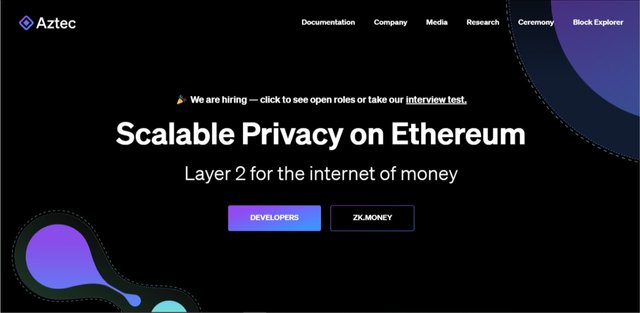
The Aztec protocol allows users to perform transactions confidentially on Ethereum's blockchain thus increasing Ethereum's functionality.
Aztec is an acronym for Anonymous Zero-Knowledge Transactions with Efficient Communications. Aztec aims to transact digitalized currencies on public blockchains but in a confidential manner. According to them, the transactions on the Ethereum network can be seen by anyone, and this lack of transactional privacy is a big barrier to the ability of blockchain technology to leverage digitalized money for finance applications because traditional finance has privacy within its framework.
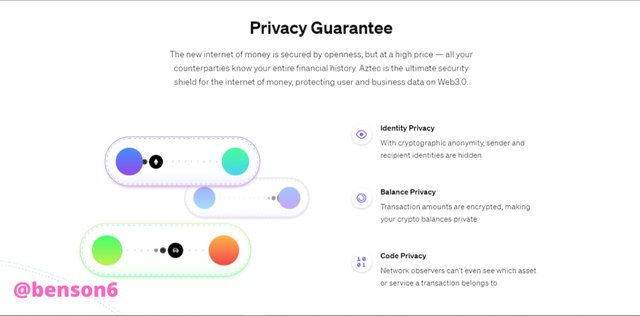
The transactions carried out on Aztec become confidential by default because the protocol uses a series of zero-knowledge proof and homomorphic encryption to encrypt them. But the protocol is made compatible with stealth addresses and third parties that are trusted. Using the protocol along with its mechanism makes Aztec provide a degree of privacy for an asset class that wasn't private before.
Aztec uses a single smart contract ACE to manage all its assets. ACE stands for Aztec Cryptography Engine. ACE makes sure that a proof validation is delegated to a specific validation contract, then a state updated instruction inside note registries are processed when the proofs are validated successfully. A note registry is like the balance registries that are commonly found in public blockchains except that some information is not made public, like how much is stored by a note, while other information like the note ownership is made public.
The model that Aztec uses is UTXO, this is the type of model used in Bitcoin. They make use of notes rather than balances, and the notes encrypt a number representing a value. The notes have owners, and the ownership is made in an Ethereum address and the owner must provide an ECSDA signature that is valid, this allows the note to be spendable. A Note Registry is used to manage the state of the note. A registry can contain multiple notes and each digital asset that makes use of the Aztec protocol will be given its note registry.
The team behind Aztec is Thomas Pocock who serves as the CEO. He was a former employee at Park Square Capital and earned a master's in mathematics. Then Zac Williamson serves as the CTO. He is the creator of the Aztec protocol and has a Ph.D. in particle physics from oxford. Another member of the team is Oana Ciobotaru who serves as the lead cryptographer and has a Ph.D. in computer science from Max Plank Institute for Informatics.
ZKSync
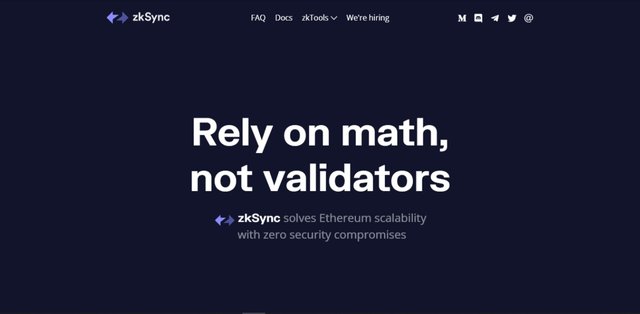
ZKSync is a platform the provides low-cost payments that don't depend on trusted protocol to help scale Ethereum's network. This functionality is powered by zero-knowledge rollups which along with data that is made available on-chain to helps to safeguard funds being stored by users. It is a Layer 2 scaling solution.
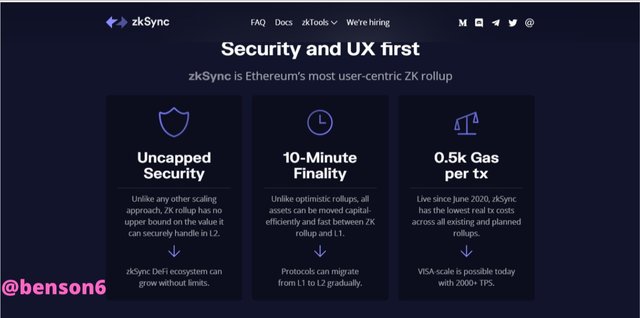
It aims to solve the issues of the high costs of transactions or gas fees that are associated with Ethereum's network. It is a platform where users can use to provide specific services. For instance, crypto wallets like Argent or Dharma intend to provide an alternative to banking through ZKSync. Its security is in tandem with Ethereum's main net blockchain. It has a high transaction throughput of 2000 transactions per second when compared with Ethereums tps of 14. It is censorship-resistant, where users can move their assets back and forth at any time. The transactions done on the platform are frictionless, that is, they can be moved between Layer 1 and Layer 2 at any time and without any delays.
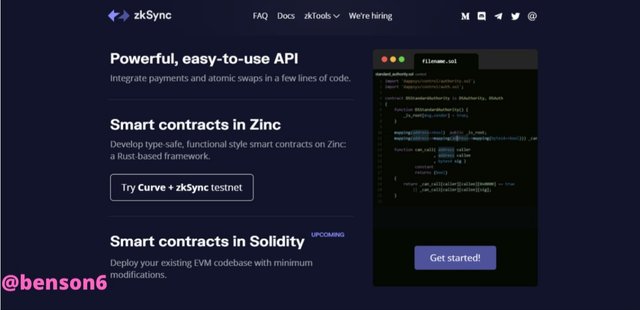
Even though it makes the security of the platform a priority, users, and developers also get an experience that is part of the design of ZKSync.
The team behind ZKSync is Matter Labs. They are an engineering company that works in areas of liberty, blockchain, and math. They got funds from big investors like Union Square Ventures and the Ethereum Foundation.

2.- Explain the Liquid Network side chain

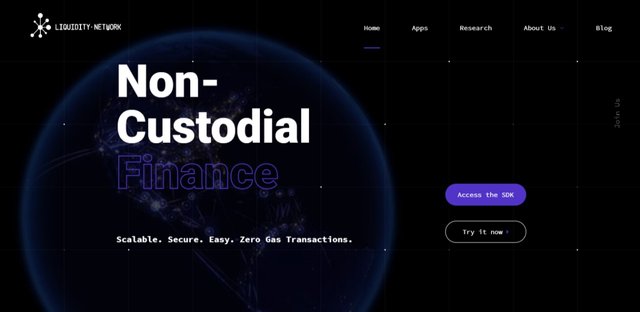
A Liquidity Network is a payment network based on Ethereum's blockchain but is off-chain that enables transactions to take place in a much quicker, cheaper, and very efficient manner.
Users can make instantaneous transactions where the fees commissioned are low. Users also have full control and management of their funds at all times.
This payment network aims to make sure that the level of security, transparency, and scalability experienced on the Ethereum blockchain is increased. To add to it, it also tries to provide an excellent user experience and service.
Scalability has been an issue at the fore of most blockchain technologies. This problem has made the technology experience less adoption. Blockchain networks seek to solve these issues through certain solutions. One of such blockchains is Bitcoin and they intend to solve this issue with the implementation of Lighting Network. For Ethereum it is Liquidity Network.
As we all know Ethereum is one of the largest blockchains but has an issue of scalability. This is seen in Ethereum's throughput and transaction (gas) fees. Currently, Ethereum processes 500,000 transactions per day or about 14 transactions per second.
Liquidity Network makes sure that the most important features of blockchain technology are the same and can be seen in the network. However, it tries to improve on those aspects that are disadvantageous. Therefore, with Liquidity Network transactions can be done off-chain and within seconds they are executed and secured.
The structure of the Liquidity Network is such that it combines specific parts of centralized systems with decentralized systems, and uses the NOCUST Hub and Revive protocols as a second-layer solution.
NOCUST Hub is a chain of commitment that is scalable which lets payments be made peer-to-peer. This makes it that users can maintain ownership of their private keys and also their assets. Also, off-chain payments are realized because the protocol works with centralized servers to ensure the processing of financial transactions and operations safely and reliably. Through this mechanism, security, scalability, and economy are guaranteed on the network.
For this process to take place effectively, the NOCUST Hub protocol uses a universal availability of nodes so that users can connect with their peers anywhere in the world.
The Revive protocol is used to complement the NOCUST Hub protocol to ensure that the record of all transactions and operations are carried out without the chain but within the blockchain network in a fast, secure, and reliable manner.
The design of the Liquidity Network is such that it makes use of universal hubs. Therefore any user who joins a hub or center can perform a transaction with another hub member. This transaction is executed instantly and the operation is off-chain, which makes the cost significantly lower than the cost experienced on-chain.
It uses what is called a center whereby there are no funds locked between only two users and for a stipulated time. Rather, the funds can be accessed by others in the same center. At the same time, it is very difficult to steal the allocated funds because it is secured by blockchain technology.
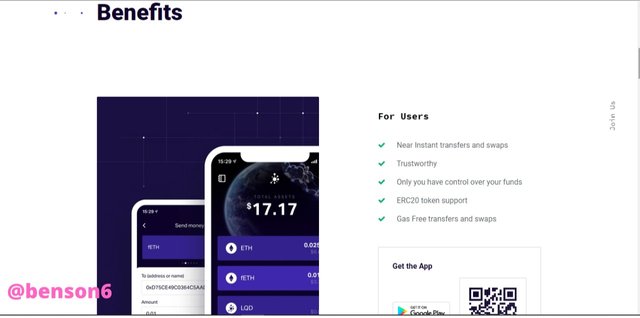
Some of the benefits experienced by the Liquidity Network are scalability and economy, instant and secure operations, no blocking of funds, and transparency within the network.
The development of Liquid Network was started by Dr. Arthur Gervais and Rami Khalil. They presented the idea in 2017, as a way to improve the performance of Lightning Network.

3.- Describe the steps to connect the Metamask wallet and the Polygon network wallet. Show screenshots.

Step 1
Go to Polygon. At the home screen, click on Use Polygon at the item bar at the top of the home screen.
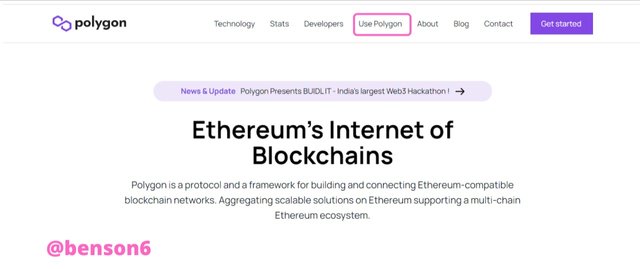
Step 2
When you click on the screen, a drop-down list of options would show, click on Polygon Wallet. It would direct you to a page where the options are displayed again. Click on Polygon Wallet the second time.
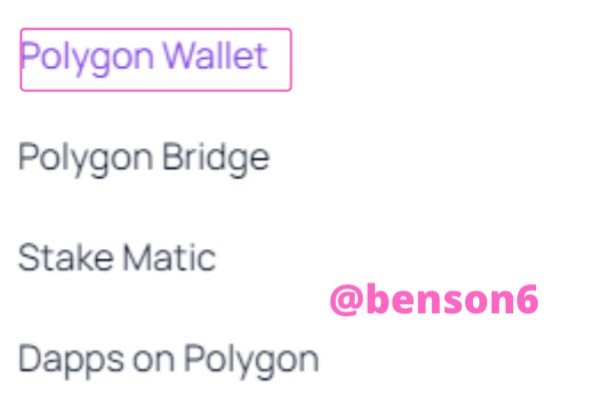
Step 3
A new page showing different wallets that can connect a user to the Polygon network. Click on MetaMask which is the first item on the list.
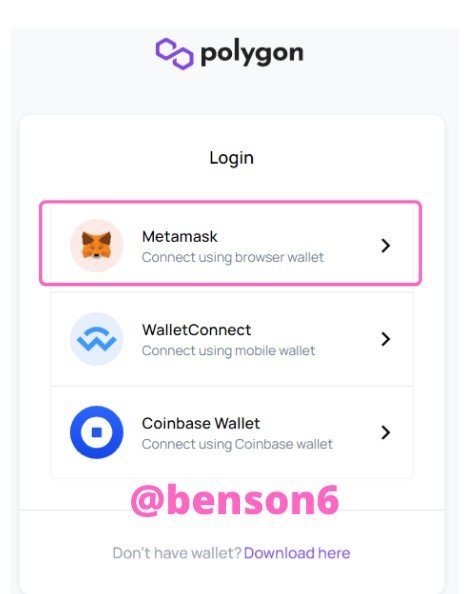
Step 4
A prompt would show up asking you to connect to Polygon's network with your MetaMask wallet. So you click on Next.
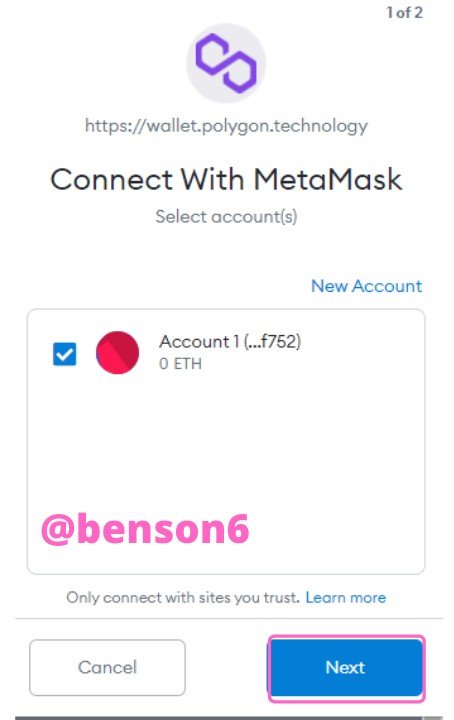
Step 5
Another prompt would display asking that you allow Polygon network to Connect to Account 1. So you click on Connect.
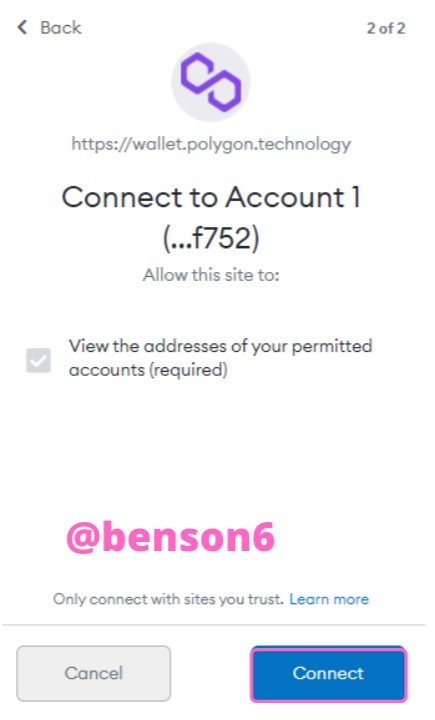
Step 6
Another prompt would display requesting your signature. Click on Sign.
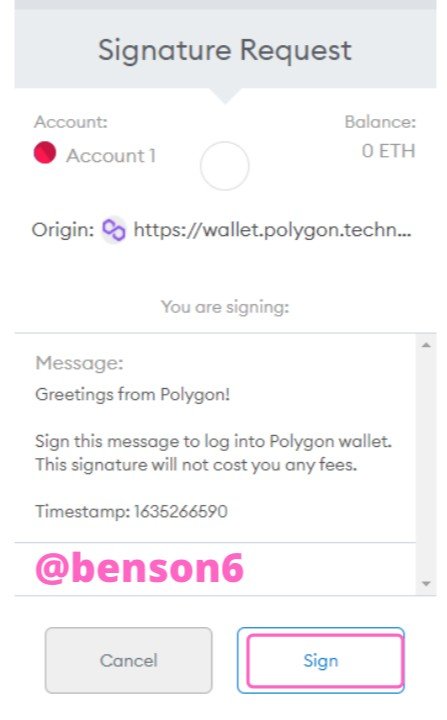
Step 7
Congratulations!! You have successfully connected your MetaMask wallet to Polygon Network. To be sure you would see the MetaMask logo at the top right corner of the platform with your account address on it.
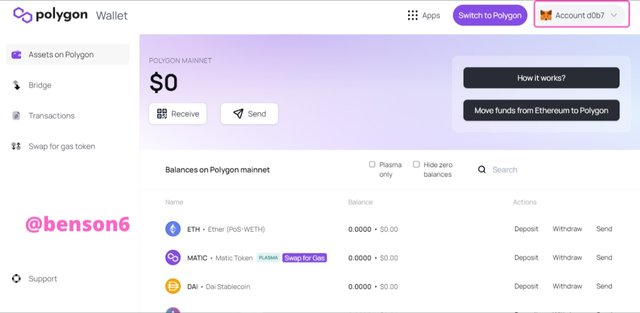

4.- According to the polygonscan block explorer, when will the block 25,000,000 be generated? Show screenshot. Explore the 12,000,000 blocks, at that time, what was the price of the Matic? Show screenshots.

To perform this exercise, you first need to go to Polygonscan. On the explorer, we can see the current price and the latest block. The current price is $1.82 and the latest block is #20,638,984.
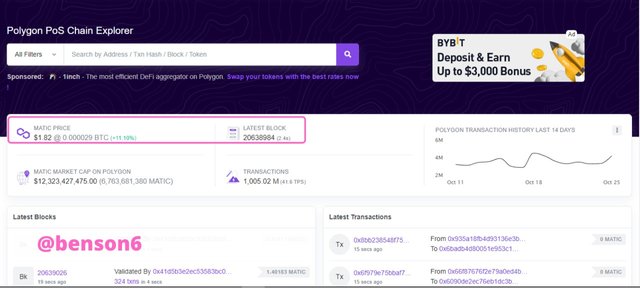
So checking for the time when the #25,000,000 would be generated. The estimated target date is Thursday, February 24 2022 at 21:49:45 GMT+0100 (West African Standard Time). It is also given in the number of days and the time to follow too.
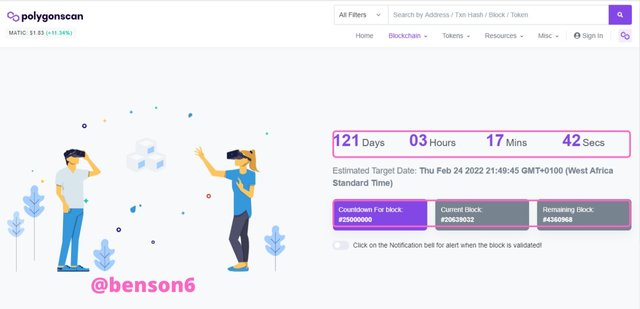
Checking the block height of #12,000,000, the price of Matic at the time was $0.38.
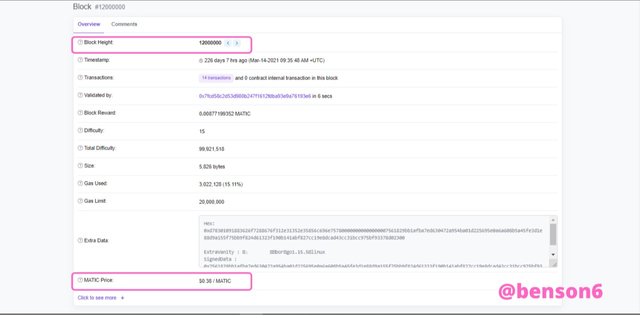

Conclusion

Sidechains are an important component in the blockchain industry. Some of the important roles that sidechains play are scalability and security. This is a welcome development as it helps blockchain networks to scale quickly and securely. It is also necessary as blockchains now employ smart contracts to their chains.
Some of the sidechains discussed above use what is known as Zero-Knowledge technology or ZK rollups. This is a situation where transactions can occur without the need for validators present. However, if the need arises, it would have to go through a very complex and rigorous verification process to ensure that the bad actor is spotted and this can take so much time.
Liquidity Network is another program that is linked to Ethereums blockchain that is interesting. The network is composed of centralized and decentralized systems together. The purpose is to make transactions to be highly scalable and at low transaction time.
#club5050 😀